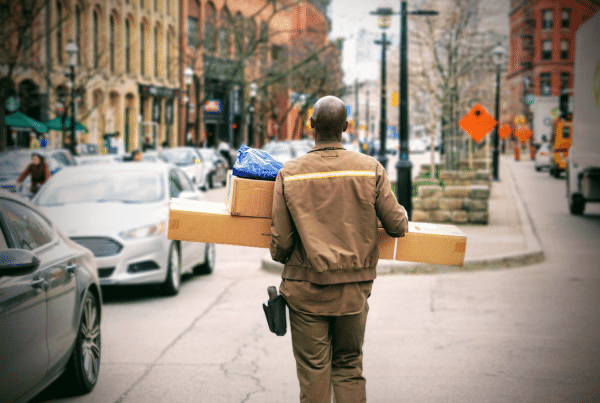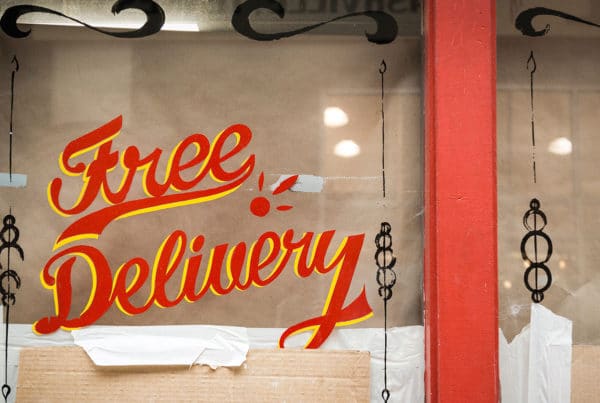Did you know that 70% of online shoppers abandon their carts right before checkout? It’s a silent revenue killer. Depending on your monthly orders and average order value, this could mean thousands, or even millions, left on the table.
Curious about why so many shoppers bail at the final step, we dug into the data. We surveyed over 8,000 consumers to understand what’s stopping them from clicking “buy.” One of the key insights? Lack of flexible delivery options is a major deal-breaker.
Keep reading to find out exactly what your customers want and how you can meet their expectations.
Key findings |
|
Home or locker? Delivery trends by country
Standard home delivery remains common across Europe (75%). However, relying solely on this option could result in missing out on more than half of the potential sales. Out-of-home (OOH) delivery methods, such as service points and parcel lockers, are gaining ground rapidly, preferred by over 58% of European shoppers.
Let’s break it down:
- Service point pickups are popular in France (46.8%) and the Netherlands (49.6%).
- Parcel lockers are increasingly favored in Germany (21.3%) and UK (19%).
- Next-day delivery stands out UK (38.9%) and Germany (25.7%).
But options alone aren’t enough. European shoppers are very specific about when they want their parcels delivered:
Moreover, 21.9% of the respondents would abandon the shopping cart if shops don’t offer convenient delivery options. This variety of preferences clearly shows why providing different delivery options tailored to local markets can significantly improve customer satisfaction.
Why out-of-home delivery is on the rise
According to our study, over 39% of Europeans express a positive preference for online stores that actively offer out-of-home delivery options, such as parcel lockers and pickup points.
Why is that? In Sendcloud’s 2024 Out-of-Home Delivery Survey, we asked online shoppers what factors would influence their decision to choose out-of-home delivery instead of home delivery. The most popular response was the convenience of not having to wait at home for a package (55%).
Consumers in Italy, Spain, and France show the strongest preference for out-of-home delivery options, with around 50% supporting these services. This trend indicates robust demand in these Southern European markets, while UK shoppers are more divided and exhibit greater negative sentiment. However, despite these local differences, out-of-home delivery is a trend we simply can’t ignore.
“Our customers appreciate the convenience of out-of-home delivery. With service points and lockers around the corner, they don’t need to be home to receive packages. It’s a solution that fits into their busy lives.” – Jordy Holthuijsen, CCO at XXL Nutrition
Out-of-home delivery not only meets the increasing consumer demand for flexibility and convenience but also provides significant operational benefits. Online retailers that offer OOH options at checkout are experiencing advantages such as higher delivery success rates, reduced last-mile costs, and improved conversion rates.
Want to discover valuable insights into out-of-home delivery? Explore how out-of-home delivery is shaping the future of e-commerce.
Speed vs. Flexibility: Striking the right balance
Finding the balance between speed and flexibility is essential. While 35.8% of shoppers expect deliveries within 2 to 3 days, 33.4% are willing to wait a bit longer, specifically 4 to 5 days.
Germany (43.7%) and Spain (44.6%) clearly prioritize quicker delivery, while customers in France (38.9%) and the UK (38.7%) show greater flexibility with slightly longer waits.
Next-day delivery also has its nuances. Most customers expect to be able to order until midday (20.9%) or early afternoon (14.4%) to receive their orders the next day. Notably, Italy and Germany prefer earlier cutoffs (12 PM), while Spain and the UK prefer later cutoffs (8 PM).
Interestingly, about 32% of shoppers consistently opt for the fastest delivery, regardless of the urgency, showing a clear segment that is motivated by speed. However, nearly 37% are not motivated by delivery speed alone, valuing affordability over fast delivery.
When are consumers willing to pay extra for delivery?
Providing premium delivery options can significantly increase your conversion rates. Consumers are most willing to pay additional fees for:
- Same-day delivery
- Next-day delivery
- Exact delivery times
This willingness underscores the importance of speed and precise timing. Offering these premium options can boost your average order value, making them worthwhile investments.
Though sustainability matters increasingly to shoppers, fewer customers are ready to pay extra for “green” delivery compared to speed or exact timing. Additionally, around 10% of consumers strongly expect free or low-cost shipping, showing price sensitivity remains crucial.
How lack of flexibility damages cart conversions and loyalty
Not offering flexible delivery options isn’t just frustrating, it’s costly. High shipping costs, slow deliveries, confusing options, and negative past experiences are among the top reasons European consumers abandon their carts:
High shipping costs are the biggest issue in France and the UK, where 76.3% and 75.5% of consumers abandon their carts.
Germany and Italy consumers see slow delivery times as the main factor, and French consumers struggle with negative past delivery experiences.
Beyond the immediate sale, poor delivery experiences severely damage long-term customer loyalty. Over 25.8% of consumers will stop shopping at a retailer altogether after just one negative delivery experience.
Non-shipping reasons for cart abandonment
Though delivery plays a significant role, other factors also contribute to cart abandonment:
- Payment options
- Return policies
- Security concerns
- Confusing checkout processes
Country-specific variations exist. In Austria and Germany, payment options are the primary reason for cart abandonment, with 52% and 49.4% of customers abandoning their carts due to this reason.
In the UK, concerns about the delivery experience and security are significant factors, with the delivery experience alone contributing to 41.5% of cart abandonments.
Italy and Spain struggle with issues related to return policies, while customers in the Netherlands and Belgium are again focused on payment options.
Practical tips for delivering flexibility (and winning customer loyalty)
Now it’s time to turn these insights into action! It’s essential to understand that there isn’t a one-size-fits-all solution. Expectations can vary significantly based on the demographics of your target market, including age, country, and specific customer segments. Here are some steps you can take:
- Understand your audience: Know your shoppers’ demographics, including age, gender, region, and market. Identify who brings in the highest order value.
- Compare your audience with market studies: Use reports like the E-commerce Delivery Compass to understand delivery preferences relevant to your audience. If your target market is Gen Z women, tailor your shipping options specifically, keeping in mind country-specific differences.
- Adapt your shipping strategy accordingly: Once you understand your customers’ expectations, align your shipping strategy to meet those specific needs. Does your audience prefer faster delivery or sustainable shipping methods? How long are they willing to wait for their package to arrive? Do they have a preferred carrier?
- Optimize through A/B testing: After setting flexible delivery standards, continuously refine your checkout experience by A/B testing different shipping variables. This will help you further enhance conversions, customer loyalty, and satisfaction.
- Gather feedback: If you want to know why customers are abandoning their carts, whether it’s due to high shipping fees, a lack of flexible delivery options, or something else, you can set up an exit-intent survey on the checkout page. Tools like Hotjar let you gather immediate feedback, so you can use real data to pinpoint what needs improvement and make the necessary changes.
Conclusion: Flexibility is your competitive edge
Flexible delivery options are no longer optional; they are a basic customer expectation. Retailers who prioritize flexible delivery will effectively stand out, reduce cart abandonment, and boost customer loyalty.
Want more insights? Read the full report for additional data and actionable tips to refine your delivery strategy.















